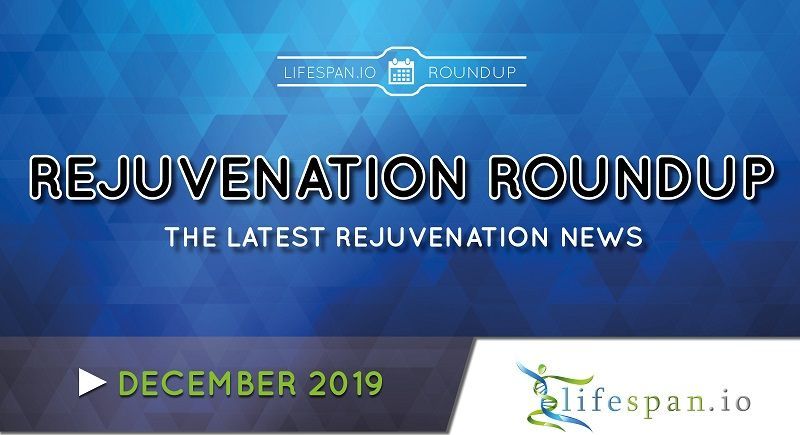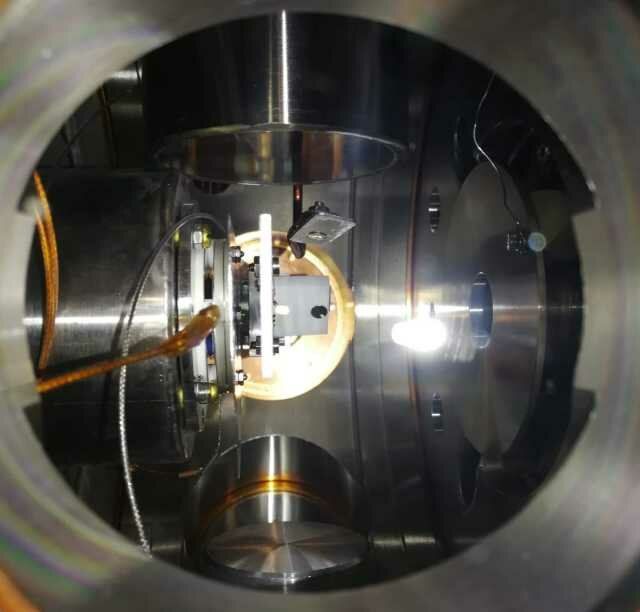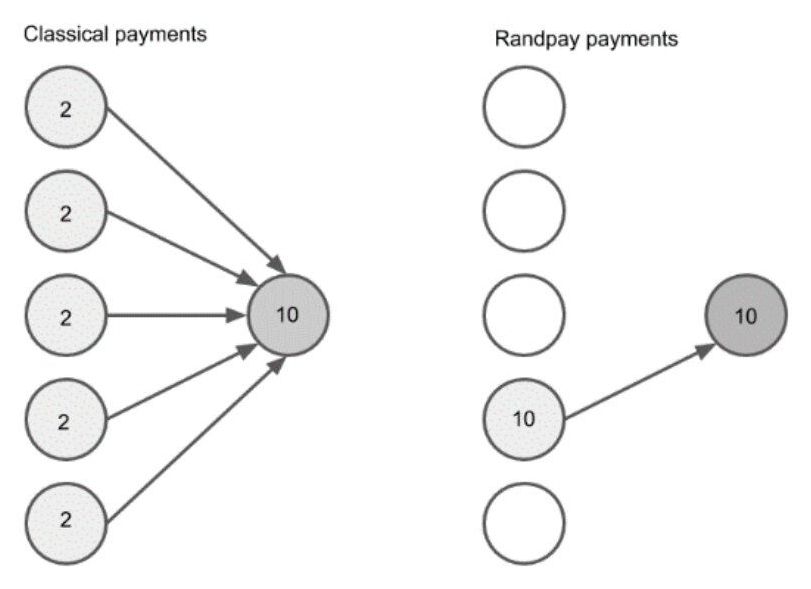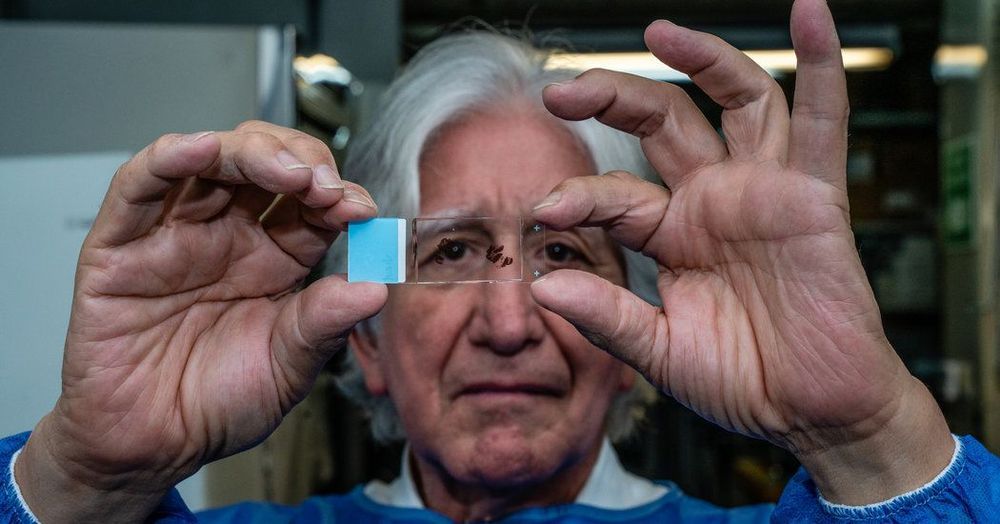Page 7243
Dec 20, 2019
Rejuvenation Roundup December 2019
Posted by Paul Battista in categories: biotech/medical, genetics, life extension
Rejuvenation Roundup November 2019
Quite a number of readily understandable reviews were published this month, along with an X10 episode on epigenetic alterations; if you’re new to the biology of aging or want to introduce someone else to the topic with new material, this is a great time to start.
LEAF News
Dec 20, 2019
Pac-Man-era microchip could help gobble up nuclear warheads
Posted by Saúl Morales Rodriguéz in categories: computing, military
When Russian nuclear inspectors traveled to the U.S. in the early 2000s, they were not allowed to directly examine classified nuclear weapon components, Professor Alex Glaser said. Instead, the inspectors were shown a radiation detector’s green light as confirmation that components were real.
The Russians were not convinced, Glaser said, noting that one said the only thing the test proved was that the Americans had a green LED with a battery connection.
Details about nuclear weapons remain among the world’s most highly guarded secrets. An expert dismantling a weapon, or even witnessing its destruction, can learn much about the warhead. On the other hand, without examining the weapon, it’s difficult to convince inspectors that a real weapon was destroyed. This has long been considered a problem for disarmament —how can countries convince others that a nuclear weapon is gone without revealing details about its arsenal?
Dec 20, 2019
New form of uranium found that could affect nuclear waste disposal plans
Posted by Genevieve Klien in category: nuclear energy
Research shows underground storage can create new compound of element which could affect groundwater.
Dec 20, 2019
Israeli migraine-busting device saluted as 2020 ‘game changer’
Posted by Genevieve Klien in category: futurism
Netanya-based startup Theranica chosen in category of ‘electro-charged therapeutics’ by New York data firm CB Insights.
Dec 20, 2019
Making long-lived positronium atoms for antimatter gravity experiments
Posted by Quinn Sena in category: particle physics
O.o.
The universe is almost devoid of antimatter, and physicists haven’t yet figured out why. Discovering any slight difference between the behaviour of antimatter and matter in Earth’s gravitational field could shed light on this question. Positronium atoms, which consist of an electron and a positron, are one type of antimatter atoms being considered to test whether antimatter falls at the same rate as matter in Earth’s gravitational field. But they are short-lived, lasting a mere 142 nanoseconds – too little to perform an antimatter gravity experiment. Researchers are therefore actively seeking tricks to make sources of positronium atoms that live longer. In a paper published today in the journal Physical Review A, the AEgIS collaboration at CERN describes a new way of making long-lived positronium.
To be useful for antimatter gravity experiments, a source of positronium atoms needs to produce long-lived atoms in large numbers, and with known velocities that can be controlled and are unaffected by disturbances such as electric and magnetic fields. The new AEgIS source ticks all of these boxes, producing some 80 000 positronium atoms per minute that last 1140 nanoseconds each and have a known velocity (between 70 and 120 kilometres per second) that can be controlled with a high precision (10 kilometres per second).
Continue reading “Making long-lived positronium atoms for antimatter gravity experiments” »
Dec 20, 2019
Randpay: a technology for blockchain micropayments that requires a recipient’s consent
Posted by Gerard Bain in categories: bitcoin, business
Two researchers at Emercoin, a decentralized peer-to-peer (p2p) network providing secure blockchain business services, have recently developed a new technology called Randpay that only allows users to complete payments and transactions with a recipient’s consent. Using this new technology, presented in a paper pre-published on arXiv, users can also safely and easily micropay specific data values derived from sensors, individual stock quotes, downloaded pictures, search engine results, road tolls and other sources.
“Randpay opens a new niche in the business processes,” Oleg Khovayko, one of the researchers who developed the technology, told TechXplore. “All other micropayment technologies have minimal sum limitations because of the low bound limit of transaction fees. With Randpay, transaction fees are reduced along with payment amounts. As a result, there is no payment minimum and payments can be as small as 1/100000 part of cent, if needed.”
The blockchain protocol developed by the researchers draws inspiration from a system of electronic lottery tickets based on micropayments invented by Ronald Rivest in 1997. In his work, Rivest introduced the concept of electronic lottery tickets, where there is a centralized system and payments can only go through in the presence of a trusted third party and, where possible, a ‘lottery facilitator’.
Dec 20, 2019
See Boeing’s Starliner Launch to the Space Station
Posted by Alberto Lao in category: space

#Starliner is “go” for launch!
The launch of The Boeing Company’s Orbital Flight Test to the International Space Station, as part of our NASA Commercial Crew Program, is scheduled for Friday, Dec. 20.
Tune in starting at 5:30 a.m. EST to see the uncrewed flight test launch at 6:36 a.m. EST for the spacecraft’s maiden mission to our orbiting laboratory.
Dec 20, 2019
Why Didn’t She Get Alzheimer’s? The Answer Could Hold a Key to Fighting the Disease
Posted by Paul Battista in categories: biotech/medical, genetics, neuroscience
Researchers have found a woman with a rare genetic mutation that has protected her from dementia even though her brain has developed major neurological features of the disease.
Dec 20, 2019
A clue to a cure for Alzheimer’s disease
Posted by Paul Battista in categories: biotech/medical, genetics, neuroscience
Half of people who live to 85 will develop Alzheimer’s disease — a disturbing statistic. But research into a family in South America has revealed a gene mutation that appears to afford protection, and may lead to a way to treat or possibly even prevent the disease.

















